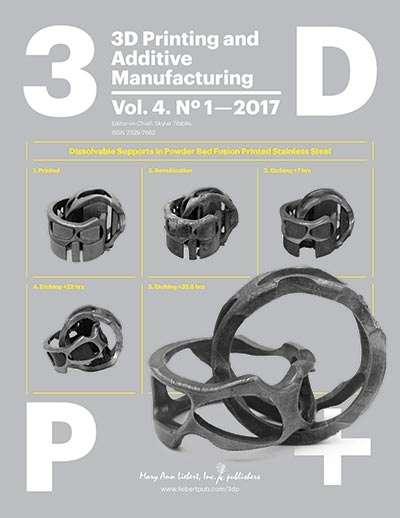Credit: Mary Ann Liebert, Inc., publishers
A new study demonstrates proof-of-concept for combining computational design and simulation tools with 3D printing technology to produce self-expandable polymer stents that can grow with pediatric patients, are biodegradable, and require only a minimally-invasive procedure for implantation. This innovative method is described in an article in 3D Printing and Additive Manufacturing.
M.S. Cabrera, B. Sanders, O.J.G.M. Goor, A. Driessen-Mol, C.W.J. Oomens, and F.P.T. Baaijens, Eindhoven University of Technology, the Netherlands, coauthored the study entitled "Computationally Designed 3D Printed Self-Expandable Polymer Stents with Biodegradation Capacity for Minimally-Invasive Heart Valve Implantation: A Proof of Concept Study."
To overcome the current challenges in designing bioabsorbable polymer stents with the necessary mechanical properties for use in minimally invasive procedures to implant tissue-engineered heart valves in young patients, researchers have developed a novel approach to create stents with growth potential and a sufficient degree of plastic deformation. The rapid prototyping method they describe involves creating an in silico model of a conventional nitinol stent and then translating the computational simulation into prototype stents using 3D printing and a flexible copolyester elastomer. The authors evaluated the mechanical properties of the stents by subjecting them to crush and crimping tests, and performed accelerated degradation tests to assess their biodegradability.
More information: María Sol Cabrera et al, Computationally Designed 3D Printed Self-Expandable Polymer Stents with Biodegradation Capacity for Minimally Invasive Heart Valve Implantation: A Proof-of-Concept Study, 3D Printing and Additive Manufacturing (2017). DOI: 10.1089/3dp.2016.0052
Provided by Mary Ann Liebert, Inc




















